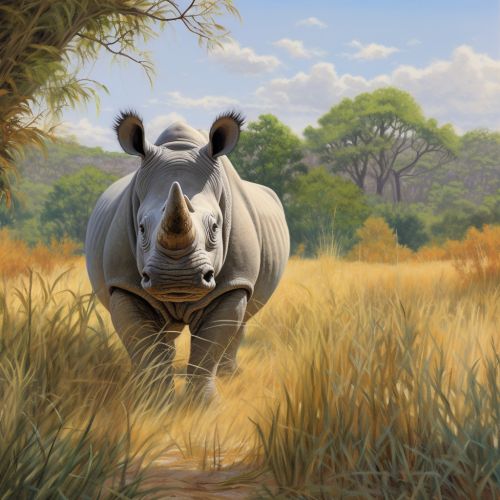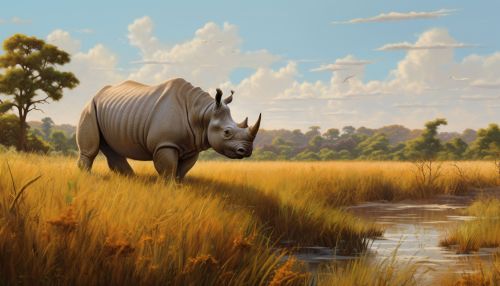Indricotherium
Taxonomy and Evolution
The Indricotherium, also known as Paraceratherium, is an extinct genus of hornless rhinoceros, and one of the largest terrestrial mammals that has ever existed. It lived from the early to late Oligocene epoch (34–23 million years ago). Its remains have been found across Eurasia between China and the BalkansOligocene Epoch.
The Indricotherium is part of the family Hyracodontidae, within the superfamily Rhinocerotoidea, which also includes modern-day rhinoceroses. The Hyracodontidae family is characterized by their long limbs and necks, adapted for browsing on tall vegetation, and their teeth, which are adapted for a herbivorous dietHyracodontidae Family.


Description
The Indricotherium was a gigantic mammal, standing about 4.8 meters (16 ft) tall at the shoulder and up to 8 meters (26 ft) in total height. It had a long neck and long, slender legs, similar to those of modern giraffes. Its body shape was unlike modern rhinoceroses, and more similar to that of large, extinct mammals like the brontotheresBrontotheres.
The skull of the Indricotherium was long and low with a small, hornless nose. The teeth were adapted for browsing on high-growing soft vegetation, with high-crowned molars and small incisors. The dental formula was similar to that of other rhinoceroses, with the exception of the canines, which were reduced or absent.
Habitat and Behavior
The Indricotherium inhabited the forests and plains of Eurasia during the Oligocene epoch. It was a browser, feeding on a variety of vegetation, including leaves, soft plants, and shrubs. Its long neck would have allowed it to reach vegetation up to 5 meters (16 ft) off the ground.
Based on the size and structure of the Indricotherium, it is believed that it lived a solitary life, much like modern rhinoceroses. It likely had few predators, due to its massive size and strength.
Fossil Record
Fossils of the Indricotherium have been found in various parts of Eurasia, from the Balkans to China. The first fossils were discovered in the early 20th century in what is now Kazakhstan. Since then, numerous other fossils have been found, including several nearly complete skeletons.
The fossil record of the Indricotherium provides valuable insights into the evolution of large mammals during the Oligocene epoch. It also provides a glimpse into the environments and ecosystems of this time period.
Extinction
The exact cause of the Indricotherium's extinction is not known. However, it is believed that changes in climate and vegetation during the late Oligocene and early Miocene epochs may have contributed to its decline. As the climate became drier, the forests and lush vegetation that the Indricotherium relied on for food began to disappear, replaced by grasslands. This change in habitat would have put pressure on the Indricotherium, eventually leading to its extinction.
